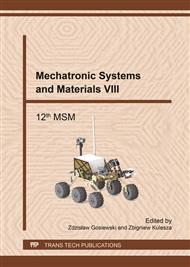p.202
p.212
p.219
p.227
p.235
p.241
p.249
p.258
p.266
Predictive Models for Transient Loads of Vertical Stabilizer of an Aircraft Using Canonical Correlation Analysis
Abstract:
The knowledge about loads of the structure occurring during aircraft operation, is one of the fundamental element of the so called damage tolerance approach to aircraft design. In the optimal case, such information could be available from a network of sensors, e.g. strain gauges, FBGs, deployed in the aircraft structure and measuring its local stress. However, systems of operational loads monitoring (OLM) are still not widely applied. Instead, what is available, is a set of flight parameters, which by the laws of inertia and aerodynamics should determine dominant part of loads, acting on a given element. In this paper, canonical correlation analysis (CCA) will be discussed as an useful method for selection of flight parameters proper for prediction of aircraft loads.
Info:
Periodical:
Pages:
235-240
Citation:
Online since:
July 2017
Authors:
Price:
Сopyright:
© 2017 Trans Tech Publications Ltd. All Rights Reserved
Share:
Citation:


